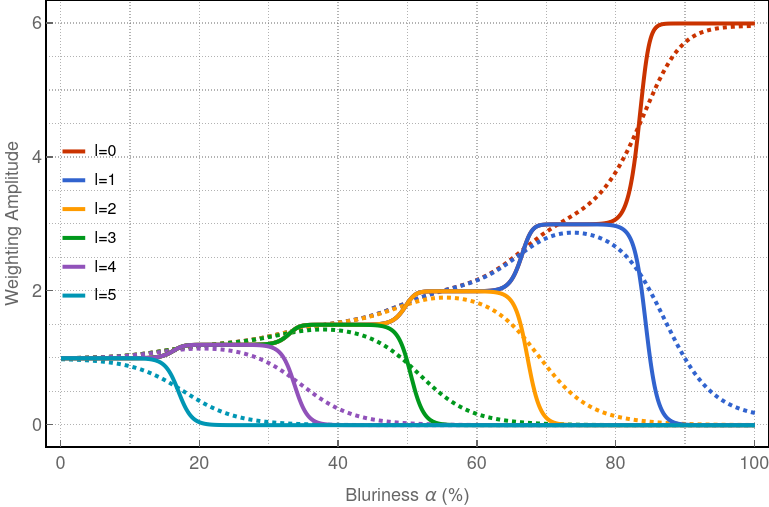Ambisonic Blur
This tool controls the spatial resolution of the $L^\text{th}$ degree Ambisonic sound scene while preserving its overall energy. Implementation is described in1. The user can control the “blurriness” of the scene from $0\%$ to $100\%$ by gradually varying the maximum degree retained for the output sound scene and thus the spatial resolution. This is done by muting the higher degree components as the blur parameter $\alpha$ goes from $0\%$ to $100\%$ with weighting functions

as shown in Fig.1. Thus, when the components of degree $l_1 \leq L$ are muted, the remaining components of degree $l \leq l_1$ are amplified in accordance to keep the global energy of the sound scene.
The slope of the weighting functions is controlled by a parameter $\tau$.
Compilation parameter
L: maximal Spherical Harmonics degree (i.e., Ambisonics order, $L \geq 0$)
Inputs / Outputs
- Inputs: $(L+1)^2$
- Outputs: $(L+1)^2$
User Interface
| Element | OSC | Min value | Max value |
|---|---|---|---|
| Blur proportion $\alpha$ ($\%$) | alpha |
0 | 100 |
| Steepness $\tau$ | tau |
0.25 | 1 |
-
T. Carpentier, « Ambisonic spatial blur », in Audio Engineering Society Convention 142, Berlin, 2017, p. 1‑7. ↩